Software as a Service, commonly known as SaaS, has emerged as a transformative force in the realm of technology and business operations. In a nutshell, SaaS represents a cloud computing model wherein software applications are hosted and delivered over the internet through a subscription-based model. This paradigm shift fundamentally alters the traditional approach to software usage and management.
The evolution of SaaS is a compelling narrative. Its roots can be traced back to the early 2000s when it first appeared as an innovative alternative to the conventional method of software installation. However, what began as an intriguing concept soon gained widespread recognition and acceptance due to its remarkable advantages. Today, SaaS has become an indispensable part of the modern business landscape.
SaaS stands as a testament to the ever-evolving nature of technology. It has evolved to meet the dynamic demands of businesses in an era where agility, scalability, and cost-efficiency are paramount. Its evolution has been shaped by the convergence of cloud computing, improved internet connectivity, and the changing preferences of businesses seeking smarter ways to leverage technology. The importance of SaaS in contemporary business cannot be overstated. In an era where agility and adaptability are the keys to success, SaaS empowers organizations to streamline their operations, enhance collaboration among teams, and stay ahead of the technological curve.
How Does SaaS Work
The SaaS Delivery Model:
At the core of SaaS is the principle of accessibility and convenience. In a traditional software setup, individuals or businesses are required to install software on their local devices or servers. However, SaaS takes a different approach. It operates on the cloud, with software applications hosted remotely on the provider’s servers. Users access these applications through a simple web browser, eliminating the need for complex installations and extensive local storage. This shift in the delivery model simplifies software deployment, making it more user-friendly and efficient.
Key Components of SaaS
SaaS comprises several integral components that work seamlessly together to deliver software solutions:
- Cloud Infrastructure: The backbone of SaaS is the cloud infrastructure, which includes servers, storage, and networking resources. These resources are maintained and managed by the SaaS provider, reducing the burden on users’ IT departments.
- Application Codebase: The software applications themselves form the heart of SaaS. These applications are developed and maintained by the SaaS provider and are accessible to users over the Internet.
- Subscription-Based Pricing: SaaS operates on a subscription-based pricing model. Instead of purchasing software licenses upfront, users pay a regular subscription fee. This predictable cost structure often includes maintenance, updates, and customer support, simplifying budgeting for businesses.
Advantages of SaaS
Cost-Efficiency
One of the foremost benefits of SaaS is its cost-efficiency. Traditional software often entails substantial upfront costs, including software licenses, hardware, and IT personnel for installation and maintenance. In contrast, SaaS operates on a subscription-based model, where users pay a predictable fee at regular intervals. This predictable cost structure allows businesses to budget more effectively, eliminating the need for significant upfront investments.
Scalability
SaaS applications are inherently scalable, adapting to the evolving needs of businesses. Whether a company needs to accommodate a growing workforce, expand its software capabilities, or downsize during a lean period, SaaS solutions offer the flexibility to adjust subscriptions accordingly. This scalability ensures that organizations can align their software resources with their current requirements without the complications and expenses associated with traditional software.
Accessibility and Mobility
SaaS’s cloud-based nature enables users to access applications from anywhere with an internet connection. This accessibility and mobility are pivotal in today’s business landscape, where remote work, global collaboration, and on-the-go productivity are the norm. SaaS allows teams to work seamlessly, irrespective of their physical locations, fostering productivity and flexibility.
Automatic Updates and Maintenance
Traditional software maintenance can be a cumbersome task, requiring dedicated IT personnel to install updates and ensure system security. SaaS providers take on this responsibility, delivering automatic updates and security patches. This means users always have access to the latest features and robust security measures without needing to devote time and resources to manual maintenance.
Collaboration and Integration
SaaS applications often offer seamless integration with other software and services, facilitating collaboration and streamlining business processes. This integration capability is particularly valuable for businesses that rely on a suite of tools to manage various aspects of their operations. With SaaS, data flows smoothly between applications, enhancing efficiency and decision-making.
These advantages collectively make SaaS an appealing choice for organizations of all sizes and industries. Whether it’s cost savings, scalability, accessibility, or improved collaboration, SaaS has proven to be a transformative force in modern business. In the subsequent sections of this guide, we’ll explore common SaaS applications, delve into the factors to consider when choosing the right SaaS solution for your business and provide guidance on the successful implementation and utilization of SaaS technology.
Common SaaS Applications
Customer Relationship Management (CRM)
CRM SaaS solutions have gained immense popularity for their ability to streamline customer interactions and enhance relationships. These applications provide a centralized platform to manage customer data, track interactions, and optimize sales and marketing efforts. By offering insights into customer behavior and preferences, CRM SaaS tools empower businesses to tailor their strategies for better customer engagement.
Enterprise Resource Planning (ERP)
ERP SaaS applications offer a comprehensive suite of tools to manage various aspects of business operations. This includes finance, human resources, supply chain, inventory, and more. ERP systems facilitate efficient data sharing across different departments, resulting in improved decision-making and resource allocation.
Project Management
Project management SaaS tools are invaluable for organizations looking to plan, execute, and monitor projects efficiently. These platforms provide project teams with collaboration features, task tracking, and real-time progress updates. Project management SaaS fosters transparency and accountability, which are crucial for successful project outcomes.
Marketing Automation
Marketing automation SaaS platforms empower businesses to automate repetitive marketing tasks and optimize campaigns. These tools enable organizations to nurture leads, analyze customer data, and execute targeted marketing strategies. Marketing automation SaaS not only saves time but also enhances the precision and effectiveness of marketing efforts.
Human Resource Management
HR SaaS applications simplify and streamline HR processes, from recruitment and onboarding to payroll and benefits management. These solutions offer a centralized repository for employee information, making it easier to manage personnel data and ensure compliance with HR regulations. HR SaaS contributes to improved workforce management and employee satisfaction.
SaaS Security and Data Privacy
Data Protection Measures
SaaS providers implement various data protection measures to secure user data. These measures typically include encryption of data both in transit and at rest, access controls to limit who can access the data, and robust authentication mechanisms. Encryption ensures that even if data is intercepted during transmission or in the event of a security breach, it remains unreadable and unusable without the proper decryption keys. Access controls restrict data access to authorized personnel only, reducing the risk of unauthorized data exposure.
Compliance with Regulations (e.g., GDPR)
Data privacy regulations, such as the General Data Protection Regulation (GDPR) in the European Union, impose strict requirements on organizations handling personal data. When using SaaS solutions, it’s crucial to ensure that your provider complies with these regulations. This includes provisions for data subject rights, data breach notifications, and adherence to lawful data processing practices. Organizations must also understand their responsibilities under these regulations, as they may still be accountable for data protection even when using SaaS services.
SaaS Security Best Practices
To bolster SaaS security, organizations should follow best practices, including:
- Regularly updating passwords and implementing multi-factor authentication (MFA) for user accounts.
- Conducting regular security audits and vulnerability assessments.
- Educating users about cybersecurity best practices and potential threats such as phishing attacks.
- Implementing robust identity and access management (IAM) solutions to control user access to data and applications.
- Monitoring user activity and data access for suspicious behavior that could indicate security breaches.
Additionally, organizations should work closely with their SaaS providers to understand their specific security measures and responsibilities. Many SaaS providers offer comprehensive security features and compliance certifications, which can provide reassurance to organizations concerned about data protection.
SaaS security and data privacy are not one-time concerns but ongoing considerations. As the threat landscape evolves, organizations must adapt their security strategies and continuously update their policies and practices to stay ahead of potential risks. By prioritizing security, organizations can confidently harness the benefits of SaaS while safeguarding their sensitive data and ensuring compliance with relevant regulations.
Future Trends in SaaS
Artificial Intelligence and Machine Learning Integration
One of the most significant trends in SaaS is the integration of artificial intelligence (AI) and machine learning (ML) capabilities. SaaS providers are increasingly embedding AI and ML algorithms into their applications to enhance functionality. For example, AI-driven analytics can provide deeper insights into data, while ML algorithms can automate tasks, such as data categorization and predictive analytics. This trend is set to revolutionize how organizations leverage data and make data-driven decisions.
Edge Computing and SaaS
Edge computing is gaining prominence in the SaaS landscape. This approach involves processing data closer to the source, reducing latency, and enhancing real-time processing capabilities. SaaS providers are beginning to offer edge-based solutions to cater to businesses’ need for faster and more responsive applications, particularly in industries like IoT (Internet of Things), where real-time data analysis is critical.
Industry-Specific SaaS Solutions
SaaS solutions are becoming increasingly tailored to specific industries. Instead of generic applications, organizations can now find industry-specific SaaS solutions that address their unique needs and compliance requirements. These specialized solutions can streamline processes and improve efficiency within specific sectors, such as healthcare, finance, and manufacturing.
SaaS Ecosystems and Integrations
SaaS ecosystems are expanding, with providers offering a wide range of integrations and partnerships to create seamless workflows. The future of SaaS will likely see even more integrations, enabling organizations to customize their software stacks to meet their exact requirements. This trend promotes flexibility and interoperability, allowing businesses to choose the best-in-class solutions for each aspect of their operations.
Enhanced Security and Compliance Focus
As data security concerns persist, SaaS providers are placing an even stronger emphasis on security and compliance. Future SaaS solutions are expected to incorporate advanced security measures, such as zero-trust architectures and enhanced encryption protocols, to protect sensitive data. Additionally, compliance with data protection regulations will remain a top priority for SaaS providers to ensure trust and transparency with their customers.
These trends represent the continued evolution of SaaS to meet the ever-changing demands of businesses in an increasingly digital world. Organizations that stay informed about these developments can strategically leverage SaaS solutions to gain a competitive edge, enhance operational efficiency, and adapt to evolving industry standards. By embracing these trends, businesses can future-proof their technology stack and position themselves for sustained growth and success.
Key TakeAway
SaaS, or Software as a Service, has transformed how businesses access and utilize software applications. Its evolution from a novel concept to a mainstream technology has reshaped the way organizations operate, collaborate, and innovate. SaaS offers a cloud-based delivery model, eliminating the need for complex installations and maintenance, and making software accessible from anywhere with an internet connection.SaaS isn’t limited to large enterprises; it also offers cost-effective solutions for startups and small businesses, enabling them to compete and scale effectively.
Embrace the opportunities presented by SaaS to streamline operations, foster collaboration, and drive growth. Stay vigilant about data security and privacy, and keep an eye on emerging trends to remain at the forefront of technology-driven innovation. SaaS is not merely a tool; it is a strategic enabler that can propel your organization toward greater success in the digital age.







